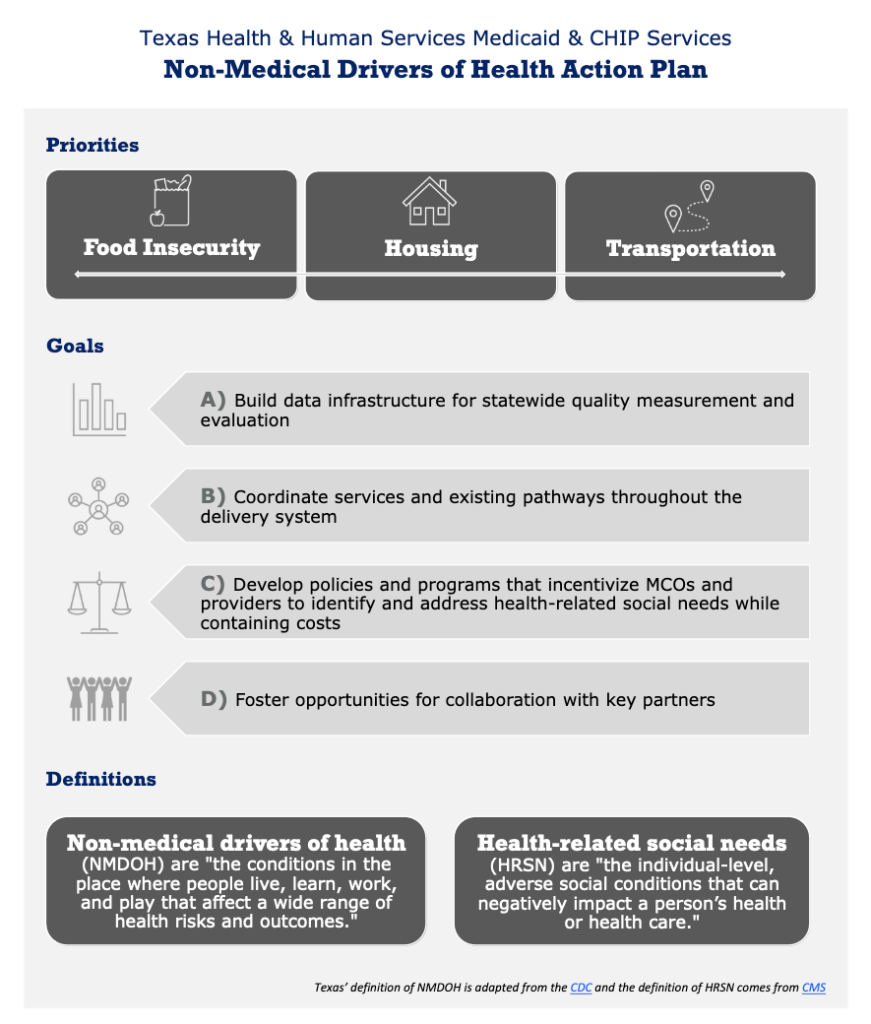
The terms Social Determinants of Health (SDOH) and Non-Medical Drivers of Health (NMDOH) have become increasingly prevalent in discussions surrounding public health. However, there seems to be some confusion about the distinctions between these terms and their respective definitions. This article aims to shed light on the concepts of SDOH and NMDOH, particularly as they relate to the EHF’s strategic plan and the implications for congregations within the Episcopal Diocese of Texas.
In general, there is no difference in meaning between SDOH and NMDOH, and they are used interchangeably to refer to “the conditions in which people are born, grow, work, live, and age, and the wider set of forces and systems shaping the conditions of daily life.” The key distinction between the two terms is that the state of Texas has decided to use and incorporate NMDOH when discussing the non-medical factors that influence health. Additionally, the use of “drivers” is preferred over “determinants” as it accurately represents the multiple influences that can impact an individual’s health. The term “determinants” might suggest a finality that could diminish accountability among policymakers and decision-makers for social and political choices leading to health inequities.
More specifically, the Texas Health & Human Services (HHSC) Medicaid & CHIP Services (MCS) has adopted NMDOH term in response to the increasing evidence demonstrating the need to address housing, nutrition, transportation, and more in order to improve health outcomes. MCS announced the Non-Medical Drivers of Health Action Plan to advance the goals and objectives to promote optimal health and improve population health management for Texans. This exciting, multi-year plan will prioritize issues related to food insecurity, housing, and transportation (Figure 1).

Figure 1: Texas Health & Human Services Medicaid & CHIP Services Non-Medical Drivers of Health Action Plan Priorities
Since 2018, EHF has partnered with the Texas Association of Health Plans (TAHP), the Texas Association of the Community Health Plans (TACHP), and HHSC to advance initiatives and activities related to addressing NMDOH in Texas. We are encouraged by this action plan, and we look forward to sharing developments with congregations as it enhances our continued work in improving health, not just healthcare, in Texas.
References (also embedded in article)
- https://www.hhs.texas.gov/sites/default/files/documents/nmdoh-action-plan.pdf
- https://www.episcopalhealth.org/research-report/non-medical-drivers-of-health-nmdoh-strategies-findings-from-a-2022-survey-of-managed-care-organizations-mcos-in-texas/
- https://prapare.org/using-clear-terms-to-advance-health-equity-social-drivers-vs-social-determinants/
- https://www.bakerinstitute.org/research/prioritizing-patient-health-texas-us-integrating-non-medical-drivers-health#:~:text=Known%20in%20the%20literature%20as,shaping%20the%20conditions%20of%20daily
- https://www.hhs.texas.gov/about/process-improvement/improving-services-texans/medicaid-chip-quality-efficiency-improvement/non-medical-drivers-health#:~:text=Why%20did%20MCS%20make%20the,and%20providers%20for%20state%20guidance.